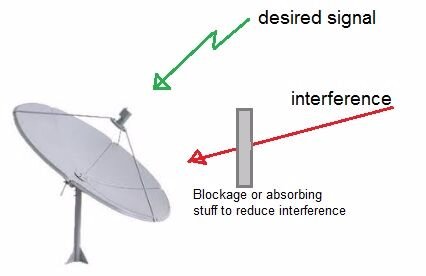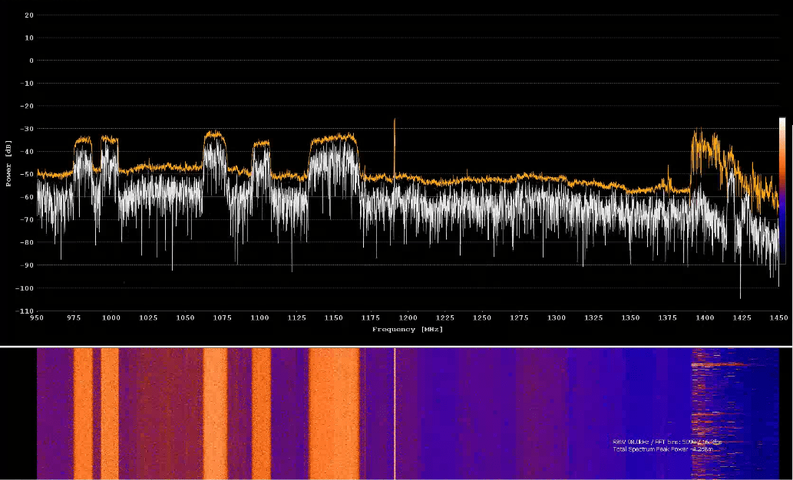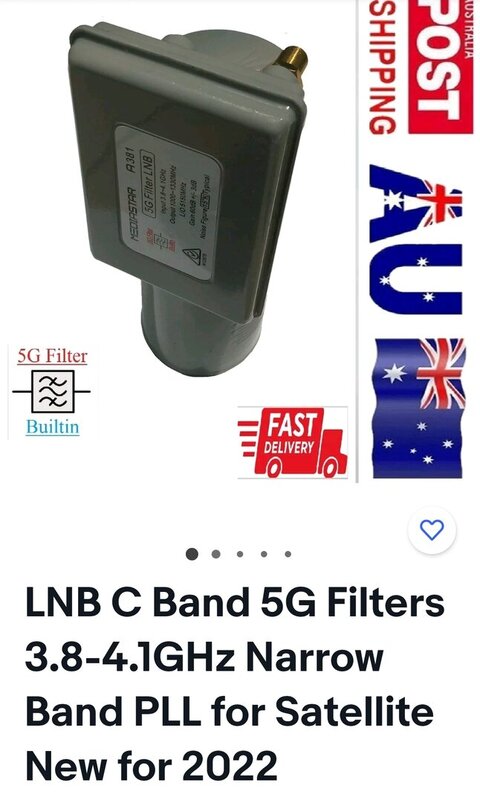Satking 5G came out for sale 1 year ago, which one was first?Titanium Brian, it appears somebody cloned your LNBF, and is selling it. Maybe some midnight runs off the shift?
C238 LNBF Dual Output vs. C2-PLL with 5G WiMAX 4G LTE Radar Interference Filter
- Thread starter mr3p
- Start date
- Latest activity Latest activity:
- Replies 57
- Views 12K
You are using an out of date browser. It may not display this or other websites correctly.
You should upgrade or use an alternative browser.
You should upgrade or use an alternative browser.
What is the best filter? The one that has an appropriate band pass filter, which attenuates the interfering signal and passes the desired down link frequency. If your region uses terrestrial transmissions up to 3800MHz and the transponder frequency is above 3800MHz, choose the C138 or C238 with narrower band pass range of 3800 - 4200MHz. If your region uses terrestrial transmissions up to 3700MHz and the transponder frequency is above 3700MHz, choose the LNBF with a wider band pass range of 3700 - 4200MHz.
Titanium C138 and C238 band pass filter frequency range is 3800 - 4200MHz, which is suitable for our market where terrestrial use is currently in use up to 3800MHz. The SatKing 5G models BPF is the wider 3700-4200 range currently in use in Australia, which would not reject the 5G interference in North America, recently launched in January 2022.
We previously discontinued the C1-PLL and C2-PLL filtering LNBF models as the wider 3700 - 4200 MHz BPF range was no longer suitable to reject the new 5G frequency range. Both the Titanium Satellite C138 / C238 and the SatKing 5G LNBFs are produced by the same manufacturer, so there will be similarities in the hardware, but each of the models address different frequency ranges.
No drama. A factory built a product for two different brands with different market requirements. primestar31 mistakenly suggested that either is a clone. Neither is a clone. The manufacturer has been building LNBFs for many years, brands and distributors. We shopped our filter design to several manufacturers. After testing a half dozen samples, we contracted with the factory to build these DRO models instead of the PLL as they were able to provide better filtering.
Titanium C138 and C238 band pass filter frequency range is 3800 - 4200MHz, which is suitable for our market where terrestrial use is currently in use up to 3800MHz. The SatKing 5G models BPF is the wider 3700-4200 range currently in use in Australia, which would not reject the 5G interference in North America, recently launched in January 2022.
We previously discontinued the C1-PLL and C2-PLL filtering LNBF models as the wider 3700 - 4200 MHz BPF range was no longer suitable to reject the new 5G frequency range. Both the Titanium Satellite C138 / C238 and the SatKing 5G LNBFs are produced by the same manufacturer, so there will be similarities in the hardware, but each of the models address different frequency ranges.
No drama. A factory built a product for two different brands with different market requirements. primestar31 mistakenly suggested that either is a clone. Neither is a clone. The manufacturer has been building LNBFs for many years, brands and distributors. We shopped our filter design to several manufacturers. After testing a half dozen samples, we contracted with the factory to build these DRO models instead of the PLL as they were able to provide better filtering.
Last edited:
It is the same dro or pll in terms of interference?? The oscillator has nothing to do with it since the bandpass filter is before the dro or pll oscillator. That is why the norsat that are of the quality that we already know are PLL, which is the most stable in the lnbs
Selected the DRO over the PLL type LNBFs because the hardware build provided better filtering. Period. Nothing to do with PLL vs DRO stability. With that said, while maintaining a reasonable price point for our target market, the lower noise figure combined with the filtering is providing better CNR when interference is present.
Please note, as I have said in previous posts, the limited bandwidth is aggregating services to MCPC and less SCPC services. Nine years ago, we introduced low cost C-band PLL LNBFs to North America market with the C1 and C2-PLL LNBFs. We would have continued to offer PLL types if it would have provided a better interference mitigation solution and met target price points for our market.
If you require both filtering and stability, by all means, buy the product that best meets your requirements. Different products are available for different customer requirements. BTW... What is the cost difference of the Norsat?
Please note, as I have said in previous posts, the limited bandwidth is aggregating services to MCPC and less SCPC services. Nine years ago, we introduced low cost C-band PLL LNBFs to North America market with the C1 and C2-PLL LNBFs. We would have continued to offer PLL types if it would have provided a better interference mitigation solution and met target price points for our market.
If you require both filtering and stability, by all means, buy the product that best meets your requirements. Different products are available for different customer requirements. BTW... What is the cost difference of the Norsat?
Brian -
Wondering if you could share your thoughts. I live in an area that got hammered by 5G when the radios were fired up around the first week of January.
I just purchased and installed your C138, but as you can see in the attached screenshot, the C138 is not filtering the 5G as I would have hoped.
Wondering if you could share your thoughts. I live in an area that got hammered by 5G when the radios were fired up around the first week of January.
I just purchased and installed your C138, but as you can see in the attached screenshot, the C138 is not filtering the 5G as I would have hoped.
Attachments
I suspect that the interfering signal source is extremely close and strong. The filter is attenuating the interfering signal, but not enough to bring the SNR to a range where the FEC can be effective. Typical attenuation at 3750MHz (5150 - 1400 = 3750) would be approx. -30 to -40dB.
One of the tricks used in the early days of C-band (when telephone PTP links were problematic): We would install dishes behind homes, barns or any other structure that could be placed between the signal source and the satellite dish.
We place this notice on the C138 and C238 LNBF product descriptions. Hope this helps other hobbyists who will be dealing with terrestrial interference:
"If the interfering signal source is extremely strong and nearby, 5G attenuation filters may not provide enough reduction to eliminate the problem. Operators may need to provide physical shielding between the interference source and the satellite dish to block the path of the interfering signals. Examples of shielding might include: Relocating the dish behind a building or wall, installing an RF "fence" or attaching side RF shields on the edges of the reflector."
One of the tricks used in the early days of C-band (when telephone PTP links were problematic): We would install dishes behind homes, barns or any other structure that could be placed between the signal source and the satellite dish.
We place this notice on the C138 and C238 LNBF product descriptions. Hope this helps other hobbyists who will be dealing with terrestrial interference:
"If the interfering signal source is extremely strong and nearby, 5G attenuation filters may not provide enough reduction to eliminate the problem. Operators may need to provide physical shielding between the interference source and the satellite dish to block the path of the interfering signals. Examples of shielding might include: Relocating the dish behind a building or wall, installing an RF "fence" or attaching side RF shields on the edges of the reflector."
Maybe you have one of those 5g antennas on an electric pole in front of your house, and your dish is aimed in that general direction?Brian -
Wondering if you could share your thoughts. I live in an area that got hammered by 5G when the radios were fired up around the first week of January.
I just purchased and installed your C138, but as you can see in the attached screenshot, the C138 is not filtering the 5G as I would have hoped.
If so, you'll have to find some way to put up an RF fence between your dish and that antenna. IF your dish doesn't have to be aimed "through" that 5g antenna, you may be able to mount metal screening around the whole perimeter edge of your dish with sheet metal screws. This would be mounted sort of like the sidewalls of a swimming pool.
Several weeks ago I started losing reception of everything under 3800 MHz and many feeds above 3800MHz were also becoming unstable. I ordered a C238 LNBF to replace my C2-PLL LNBF and had a chance to install it over the weekend. I'll admit I was a bit skeptical but wow. I honestly just swapped out the LNBF, no meter to tweak, and everything between 3800-4200 is back to normal with the same and in some cases slightly better SQ. While I guess the better SQ could somehow be related to newer hardware or a slight difference in LNBF positioning, the improvement is obvious. Big thanks to Titanium Satellite for making these available.
Have you checked by looking into the waveguide of the feed your removed, to see if there's a wasp nest in it?Several weeks ago I started losing reception of everything under 3800 MHz and many feeds above 3800MHz were also becoming unstable. I ordered a C238 LNBF to replace my C2-PLL LNBF and had a chance to install it over the weekend. I'll admit I was a bit skeptical but wow. I honestly just swapped out the LNBF, no meter to tweak, and everything between 3800-4200 is back to normal with the same and in some cases slightly better SQ. While I guess the better SQ could somehow be related to newer hardware or a slight difference in LNBF positioning, the improvement is obvious. Big thanks to Titanium Satellite for making these available.
The C1PLL or C2PLL LNBFs are no longer available. Amazon warehouse still has a few C1W-PLL units in stock.Titanium satellite do you have any c1 or c2 PLL LEFT or on clearance. I'm in the sricks. I doubt 5G will be an issue for me since my dish is shielded by trees and pointed away from a cell tower. Thanks!
Plastic cover was still intact and waveguide clean with no guests inside.Have you checked by looking into the waveguide of the feed your removed, to see if there's a wasp nest in it?
Is there a pictorial example of what an RF fence looks like?Maybe you have one of those 5g antennas on an electric pole in front of your house, and your dish is aimed in that general direction?
If so, you'll have to find some way to put up an RF fence between your dish and that antenna. IF your dish doesn't have to be aimed "through" that 5g antenna, you may be able to mount metal screening around the whole perimeter edge of your dish with sheet metal screws. This would be mounted sort of like the sidewalls of a swimming pool.
Here is a good diagram of an rf fence (shield) from RF Wireless. We used to place dishes behind structures to block terrestrial interference or construct the rf shield "walls" from chicken wire or hardware cloth, often with grounding.

The method that Arlo references is fine for fixed reflectors, but not very effective on motorized systems.
Many ideas online from prepper sites on constructing RFI shielding and Faraday cages. Fancy high tech fabrics are sold for RFI shielding, but cheap hardware cloth from a local hardwae store will do the job.

The method that Arlo references is fine for fixed reflectors, but not very effective on motorized systems.
Many ideas online from prepper sites on constructing RFI shielding and Faraday cages. Fancy high tech fabrics are sold for RFI shielding, but cheap hardware cloth from a local hardwae store will do the job.
Last edited:
Please test and share your results. What works best for your system?
I would suggest that it would not suitable for most NA hobbyists as the band pass filter cut-off will eliminate many transponders above 4.1GHz.
In our testing, we found the PLL versions did not filter as well as the DRO models that we selected.
I would suggest that it would not suitable for most NA hobbyists as the band pass filter cut-off will eliminate many transponders above 4.1GHz.
In our testing, we found the PLL versions did not filter as well as the DRO models that we selected.
5 G entered my area 1 month ago, and I was left without a signal in all the TP of the arc, practically zero signal, 4 days ago the Titanium 5G arrived and I am back in the c band, I would like to try these LNB PLL but shipping is very expensivePlease test and share your results. What works best for your system?
I would suggest that it would not suitable for most NA hobbyists as the band pass filter cut-off will eliminate many transponders above 4.1GHz.
In our testing, we found the PLL versions did not filter as well as the DRO models that we selected.
I don't know what frequency is the 5G in my area so that the signal has been completely killed in two LNB Titanium 3.7 with Wimax filter, but the titanium 3.8 solved the problem, I have several cell phone antennas in a range of 300 500 600 100 meters with a direct view of my C-band antenna
FREE 14ft Prodelin C-band dish, mount, actuator, Seavy feed and LNB in So Cal
- Inclined Orbit
- Replies: 2
Similar threads
- Replies
- 3
- Views
- 186
- Replies
- 1
- Views
- 393
- Replies
- 13
- Views
- 1K
- Replies
- 64
- Views
- 10K



